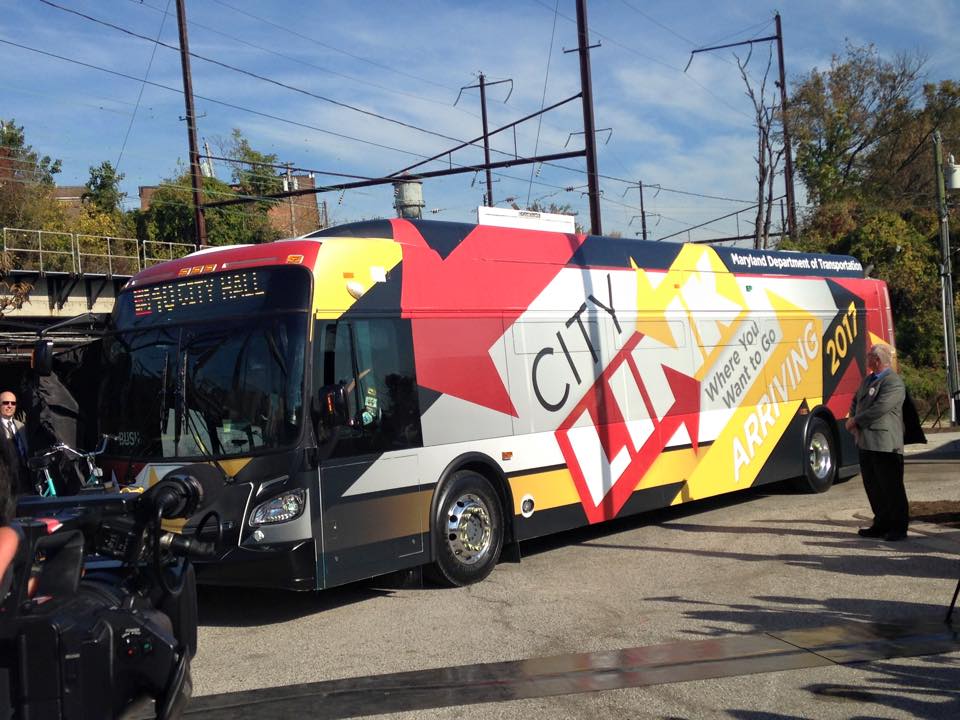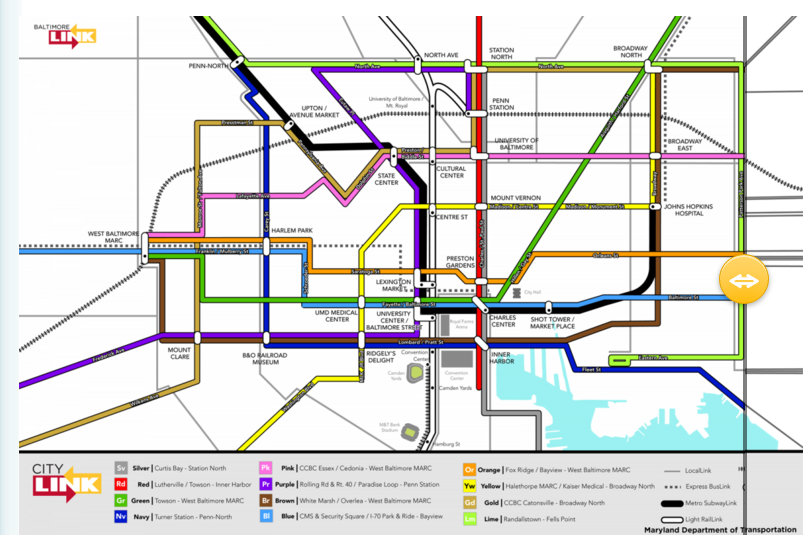Maryland Gov. Larry Hogan showed off a spiffy new bus and color-coded maps Thursday as part of a plan to revamp Baltimore’s bus system.
Among the plans for the MTA-run BaltimoreLink are 12 new routes, links with other forms of transit like subway and light rail and more room for bikes on the MARC. The state also wants to build bus-only “transit ways” through downtown Baltimore that ensure the buses can travel faster.
Calling the current system “notoriously abyssmal,” the governor also said the system would be designed to link between areas where people need to get for jobs. The area’s tech centers appear to figure heavily, as Hogan specifically mentioned providing more transit connections to job centers like “Johns Hopkins, Amazon, Port Covington and the NSA.” (Check out the maps for route info.)
Transportation has been a big question at Amazon’s giant warehouse on Broening Highway, and has been among infrastructure issues raised as Under Armour founder Kevin Plank has been unveiling plans to turn the former industrial area in South Baltimore into a massive home for the sportswear company and other makers.
In addition to planning, the MTA also wants tech upgrades for the bus system.
The state is aiming to install “Transit Signal Priority” technology. Using detection systems on buses, the system allows green lights to hold for longer if it detects that a bus is on its way. The idea is to help the buses move along faster, and stick to their schedule. The system could also be used for other forms of transit, such as light rail trains that run on city streets.
Overall, the state plans to spend an additional $135 million to make the upgrades. Hogan, a Republican, said the entire plan could be implemented by mid-2017, if the city and state cooperate.
In a sign of fights to come, the Maryland Democratic Party immediately released a statement saying Hogan traded the $2.9 billion Red Line proposal (and its $900 million in federal grant money) for a “souped-up version of the Charm City Circulator.” Mayor Stephanie Rawlings-Blake said the plan may merely “help the state fulfill its basic obligations under Maryland law.”
Join our growing Slack community
Join 5,000 tech professionals and entrepreneurs in our community Slack today!
Donate to the Journalism Fund
Your support powers our independent journalism. Unlike most business-media outlets, we don’t have a paywall. Instead, we count on your personal and organizational contributions.

Maryland firms score $5M to manufacture everything from soup to nanofiber

National AI safety group and CHIPS for America at risk with latest Trump administration firings

How women can succeed in male-dominated trades like robotics, according to one worker who’s done it



